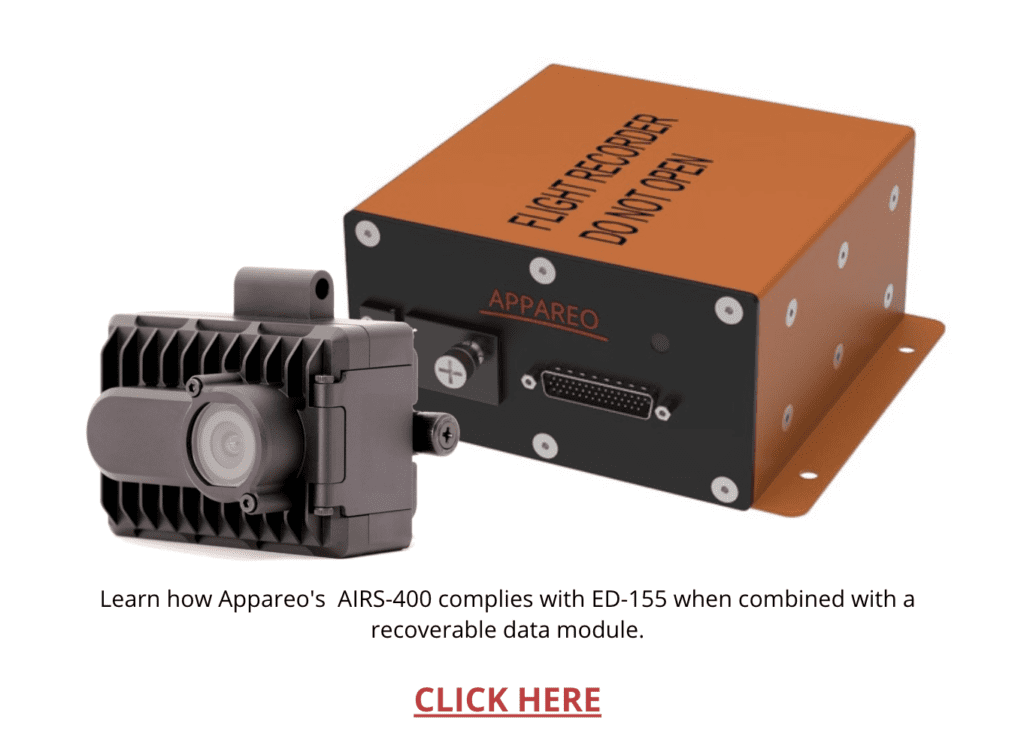Tag Archives for " flight data monitoring "
Appareo Granted Part 27 STC AML for New 4K Ultra HD Flight Data Recorder
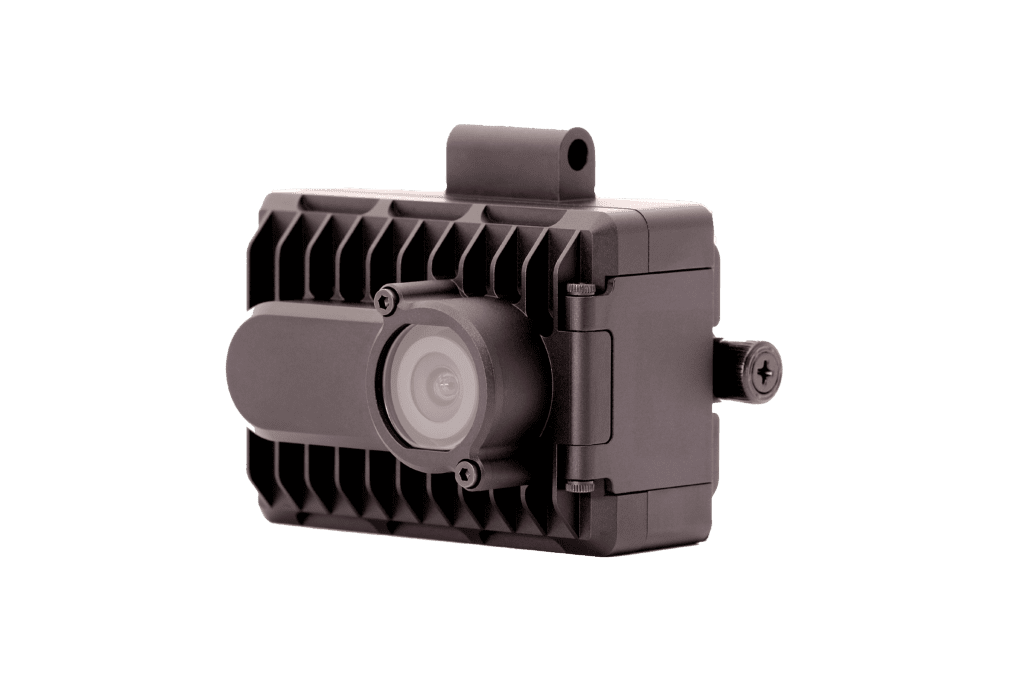
FARGO, North Dakota (January 26, 2022) — Appareo today announced the certification of AIRS-400, its 4K ultra-high-definition Airborne Image Recording System. AIRS-400 has received a Supplemental Type Certificate (STC) from the Federal Aviation Administration (FAA), for Airbus AS350, Bell 206, and Bell 407. AIRS-400 is one of the easiest FDM devices to install because it is a small, self-contained system requiring only aircraft power, ground, and GPS antenna connections. The simple installation makes it easy to obtain aircraft field approvals. Appareo plans to add to the STC AML in the future. AIRS-400 is now shipping.
In addition to recording 4K Ultra HD video, AIRS-400 captures pilot intercom system audio, ambient audio, and detailed flight data. With its inertial measurement units, AIRS-400 captures WAAS GPS (altitude, latitude, longitude, ground speed, vertical speed), attitude data (pitch, roll, yaw), rates of rotation, and acceleration data (G forces) — all in a unit that weighs 11 ounces. It is equipped for cellular data offload and comes with options for ARINC 429 input, ED-155 audio output, and RS-422 output, making it the most versatile and flexible lightweight flight data recorder on the market.
To learn more about AIRS-400, read the original product announcement, and contact Appareo for pricing information.
# # #
https://appareo.com/2022/01/26/appareo-granted-part-27-stc-aml-for-new-4k-ultra-hd-flight-data-recorder/
Easiest FDM Compliance for US Forest Service Mandate 135.607
Appareo offers the simplest and lowest-cost flight data monitoring solution to meet new US Forest Service (USFS) contract requirements. Part 135.607 requires every helicopter in USFS operations to be equipped with an approved flight data monitoring system (FDMS) capable of recording flight data performance.
The mandate states flight data monitoring systems must comply with 14 CFR 135.607. Recordings must be stored in crash-hardened memory and have removable media. Any software required to review the data must be available to the government. Also, the following parameters must be recorded:
- Attitude data including pitch attitude, roll attitude, pitch rate, roll rate, yaw rate, and acceleration (g-forces)
- Position data including latitude, longitude, altitude, vertical speed, ground speed, and heading
- Cockpit imaging including an unobstructed view of engine and flight instruments
- Ambient cockpit audio
Appareo’s Vision 1000 and AIRS-400 are two options for the easiest way to comply. For more information contact [email protected].
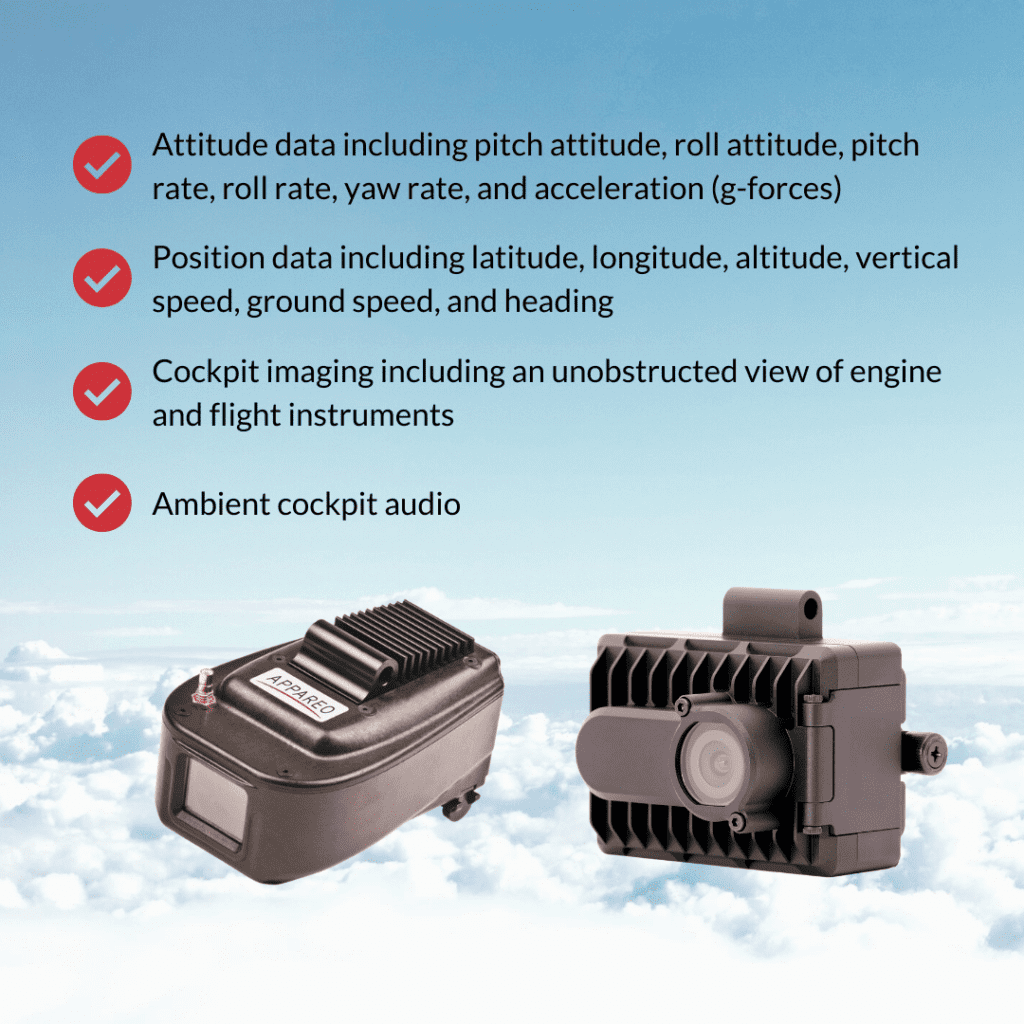
Easiest FDM Compliance for US Forest Service Mandate 135.607
What Is ED-155?
At Appareo we get A LOT of questions about ED-155. These questions are sometimes in reference to our recoverable data modules and other times in reference to our airborne image recorders.
What Is ED-155?
At a really high level, ED-155 is the minimum operational performance specification for a lightweight flight data recording system. The specification was created in response to industry pressure to provide lighter flight recorders as smaller aircraft were increasingly receiving pressure to carry flight recorders, but the predominant international flight recorder standard at the time (ED-112) was constructed primarily to address requirements for air carriers to have onboard cockpit flight and data recorders. The accident dynamics (where the crash occurs, how much energy is in the crash, what the potential for fire size/duration may be) are much different on large jetliners when compared to helicopters or smaller fixed-wing business aircraft. Especially with consideration for rotorcraft, weight and size are at a premium and lighter solutions that more appropriately address the survivability requirements of a recorder in a smaller aircraft accident were necessary to be created.
The specification was also created to encourage the modernization of flight data recording technologies, moving away from standards that support old recording media like magnetic tape.
How Is ED-155 Organized
The specification is constructed to cater to a variety of different data recording needs. It includes:
- Generals standards applicable to all recorder types
- Standards for Deployable Recorders
- A description of requirements that cater to different kinds of recorders, including:
- Cockpit Audio Recording Systems (CARS)
- Think of this as a cockpit voice recorder, although the specification also includes ambient audio data acquisition
- Aircraft Data Recording Systems (ADRS)
- Think of this as a flight data recorder
- Airborne Image Recording Systems (AIRS)
- Think of this as a cockpit camera
- Data-Link Recording Systems (DLRS)
- Think of this as a cockpit voice recorder but for digital data that is transmitted and received rather than cockpit voice
- Multi-Function Recording Systems
- Think of this as a system that combines two or more of the functions above
- Cockpit Audio Recording Systems (CARS)
The specification as a result provides a very comprehensive set of requirements that address almost any conceivable type of recording system.
Why This Can Be Confusing
This is confusing because there are no specific international mandates that decompose some of the five different categories of ED-155 and call on a specific subset of requirements to be compliant with a standard. Rather, the standard provides guidelines for a variety of different systems.
Tell Me About The General Standards
The general standards that address all recorder types include requirements for basic operation, safety, retention of recorded information, and survivability. The survivability standard covers requirements for impact/shock, crush, and flame survivability that are in excess of tests encountered in standards like RTCA DO-160. There is also a requirement that the survivable memory component of the flight recorder be bright orange and labeled with the words FLIGHT RECORDER in black letters.
What a Deployable Recorder Is And How It Relates
A deployable recorder is a recorder that is designed to come free from an aircraft in an accident sequence. In general, the objective of these recorders is often to pair them with a locating beacon and a means of flotation to allow the recorder to float and be recovered independently of the wreckage for incidents that occur over deep water. These recorders are typically mounted on the exterior of the aircraft. In Appareo’s experience, the smaller nature of the aircraft that are often under consideration for ED-155 recorders has made it unusual for us to encounter interest in deployable recorders of this size. Regardless, the standard provides for additional environmental and survivability testing criteria for ED-155 compliant recorders designed with this feature in mind.
What Is Considered A Cockpit Audio Recording System (CARS)
A CARS is a system that records both ambient area audio data (i.e. the noise inside the cockpit) as well as the pilot audio channel(s). The ambient area audio data allows accident investigators to listen to particulars of an incident, which can sometimes provide insights regarding aircraft mechanical failures (e.g. forensic analysis of turbine engine noise). The recording of pilot communications provides insights into pilot decision-making, communication between pilots, and interactions with air traffic control. In some recorder systems, the pilot audio channels and the cockpit area microphone data can be delivered by different system components.
The specification declares the performance and recording requirements (e.g. total recording capacity, recording delay tolerances, etc) for both the ambient and pilot sources while adding requirements or provisions for other capabilities (e.g. requiring a build erase function to be present). The standard also provides for the test requirements and procedures necessary to demonstrate a CARS’ performance against the standard’s requirements.
What is an Aircraft Data Recording System (ADRS)
An ADRS is a system that records digital flight data in an uncompressed format. The ED-155 standard allows for a variety of aircraft data sources, which is an effort to accommodate the wide variety of aircraft on which such recorders were intended to be installed. For example, acquiring flight data on helicopters that are not equipped with digital data buses as a portion of the avionic equipage may not be impractical – as a result, the standard allows for sensors interior to the ADRS to record such data (e.g. pitch/roll data from an IMU, GPS data, etc). Alternatively, a smaller aircraft used for business transport purposes may provide practical access to a digital data bus (e.g. ARINC 429) and the standard provides performance requirements for recording from such sources.
Much like the CARS, the ADRS specification declares performance and recording requirements for the ADRS while also specifying which parameters must be recorded, and at what frequency, for a unit to qualify as an ADRS.
What is an Aircraft Image Recording System (AIRS)
Aircraft image recording systems are equipment that is deployed for the intent of capturing image data regarding aircraft operation, which is typically then synchronized in time with the recording of other recorder types. For example, synchronizing AIRS with a CARS will provide synchronized playback of image and audio data from a flight. Likewise, synchronizing AIRS and ADRS can provide data to create synchronized cockpit videos with flight animations.
The AIRS systems are separated into six different classes. The classes are described by alpha characters (A through F) and are organized as follows:
- This Class provides a general image of the cockpit including instruments and a view of the external environment (through the glareshield)
- This Class provides a recording of the data-link message display
- This Class provides for a means of recording flight data where it is not possible or prohibitively expensive to otherwise do so
- This Class provides a means for capturing heads up displays
- This Class provides a means of capturing other camera images present to pilots (e.g. as a means of capturing cargo or cabin views presented to pilots)
- This Class provides means for capturing an external view of the aircraft
The standard provides guidance for operational considerations, like what portions of the cockpit to capture in the image frame and provisions for data security/privacy (e.g. preventing AIRS data from being easily played back by non-investigative personnel, as well as performance requirements in the areas of recording capacity, recording delay, and image compression.
What is a Data Link Recording Systems (DLRS)
Often when people refer to flight data recorders the physical interface between the flight data recorder and the aircraft is often done through ARINC 717. The objective of a DLRS is to record the messages passing to and from the aircraft via a digital means, which is typically accomplished using a standard avionic digital interface like ARINC429. In this manner, the DLRS is attempting to acquire information like data exchanged through CPDLC, digital ATIS, NOTAM delivery, etc.
Although Appareo’s recording solutions (both AIRS and RDM) can support acquiring DLRS data we typically don’t list such recorders in our compliance tables because the FANS, CPDLC, and related on-aircraft features that necessitate and enable such recorders don’t typically appear in aircraft under consideration for ED-155 style, lighter, flight data recorders.
How does AIRS-400 Comply with ED-155?
AIRS can do all of the data acquisition and recording to show compliance to a variety of ED-155 requirements by itself, however, to show full compliance to the standard the camera needs to be hooked up to another module. This section of the document will further discuss why a second module MAY be required for some installations. For the overwhelming majority of AIRS installations a second module is not required because the AIRS cameras are:
- Capable of surviving most aircraft accidents without one; and,
- In most of the world, there is no regulatory requirement to specifically be equipped with such a recorder
The sections below discuss the ways in which the AIRS-400 is not compliant with the ED-155 standard and discuss why those noncompliances exist. Then, finally, a table will provide the combinations of AIRS-400 and other products that can be used to show full compliance to the ED-155 standard.
ED-155 | Non-Compliant Appearance
AIRS-400, in an off-the-shelf configuration, is not compliant with ED-155 section 2-1.14.4. This portion of the standard requires that the recorder be bright orange in color with black letters that say, “FLIGHT RECORDER.” In general, Appareo finds our customers to prefer a less obvious, intrusive, color for a product mounted within the cockpit in plain sight. It would be possible to create a variant of our AIRS that would be bright and orange and marked in this manner, but in general, Appareo finds that our customers do not want the camera marked in such a manner because they believe it looks bad in the cockpit.
ED-155 | Non-compliant Survivability
In general, the AIRS-400 is significantly more survivable than our previous cockpit camera product, the Vision 1000. The product is not, however, compliant with ED-155 section 2-4.2.4.
It is not compliant with this portion of the standard because compliance with the flame survivability requirement requires the presence of a phase change material, a material that is used to absorb the heat energy in the event of a fire. The mass of phase change material that is necessary to absorb the amount of heat energy products are subjected to in this test is roughly 4 times the volume, and 4 times the weight, of Appareo’s AIRS-400 product. This creates a large, unattractive, product package for mounting into the ceiling of a cockpit or flight deck. For a customer that requires ED-155 or ED-112 flame survivability, a recoverable memory module mounted in a more convenient location for a large, heavy product is the right architecture for the deployment of a flight data recording system. This provides the optimal flight data acquisition capability, with a visually attractive and high-performing camera solution providing digital data to a large, less attractive, recoverable module buried out of sight in the aircraft.
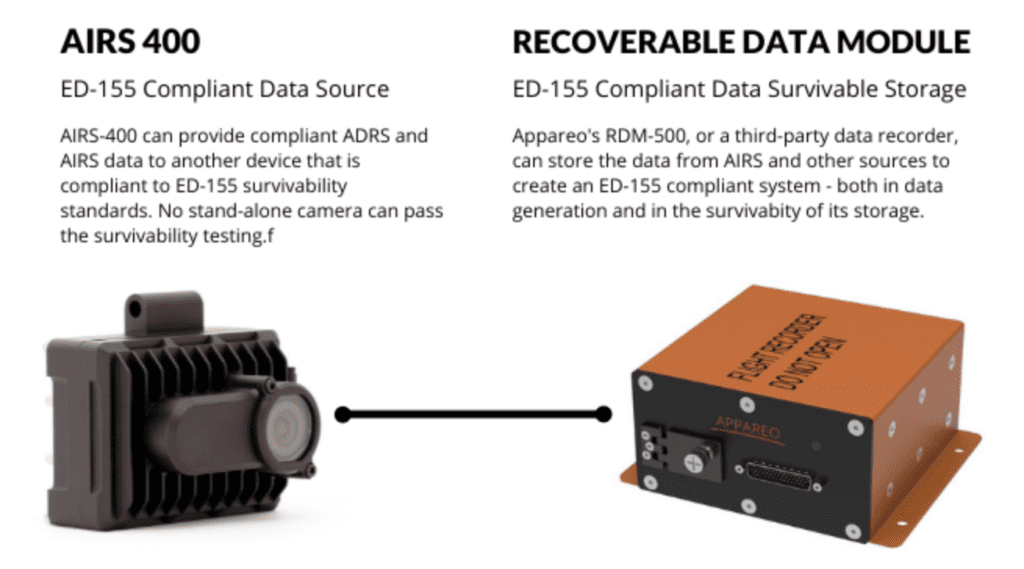
ED-155 | Achieving Full Compliance Using Appareo’s New Recorder
Achieving full compliance with ED-155 is possible with AIRS-400 in a number of ways. The first, and perhaps easiest, is to connect the camera to a recoverable memory module of either Appareo or third-party manufacture. For example:
- AIRS-400 could be used to generate data on an analog aircraft, using its internal sensors, and send that data to a large orange flight recorder (which may have no internal sensors, and on an aircraft with limited or no digital instrumentation) to provide the ED-155 ADRS function needed to comply with ED-155, refer to TSO-C197
- AIRS-400 could be used to acquire image data and send that data to a large orange flight recorder to satisfy both the AIRS and ADRS requirement on a modern, digital, aircraft that are not factory equipped with a cockpit/flight deck image recorder
- AIRS-400 could be used to provide ADRS data and the ambient area microphone function to a large orange flight recorder that provides CVFDR functionality on an aircraft with primarily analog instrumentation, greatly simplifying that recording system’s deployment
- Et cetera
There are many different ways in which this new camera, with its high survivability and alignment with ED-155 data acquisition/generation requirements, can help our global customers show compliance to regulations and standards that may invoke full or partial compliance to the ED-155 standard. The table below helps summarize some of the ways in which this compliance can be achieved.
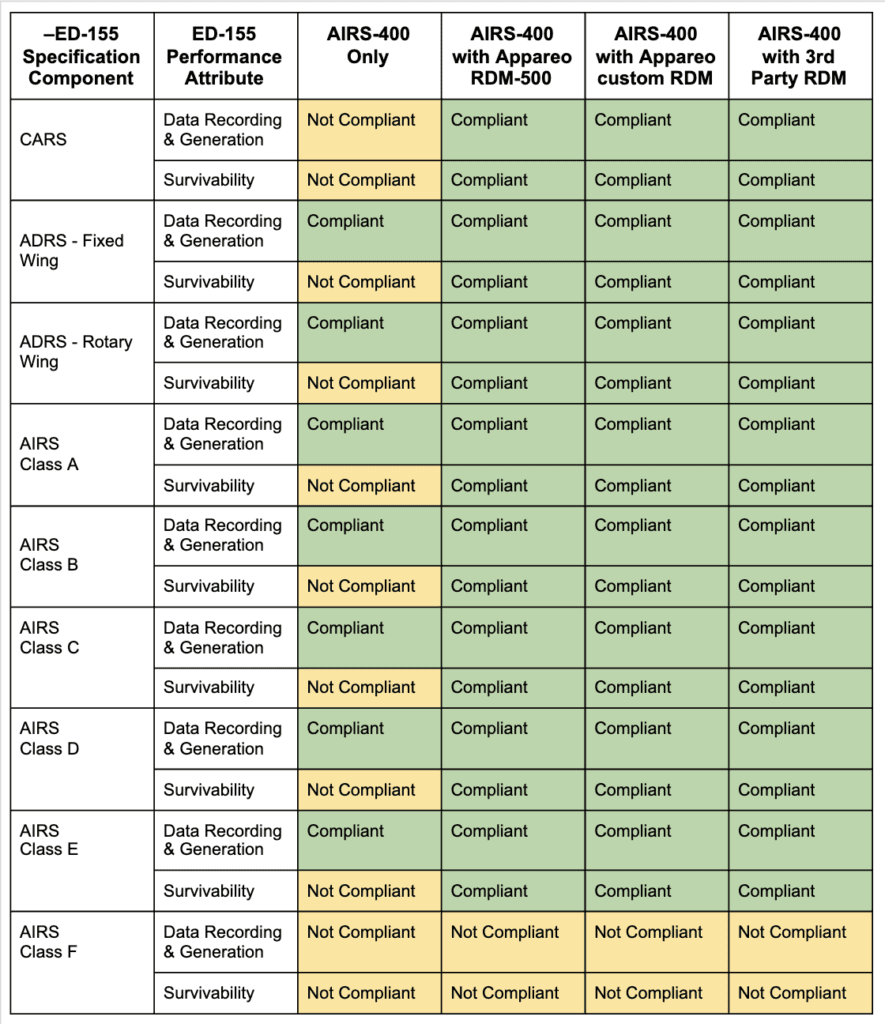
If, after reviewing this write-up and the above table, you’re still trying to understand the standard, your requirements, and how to show compliance, please contact Appareo.
Part of our role in helping our customers to be successful is providing transparent, direct, assistance in navigating these standards to achieve an affordable and conveniently implemented system that truly fits the aircraft while showing compliance to required regulations.

David Batcheller
President & CBO https://appareo.com/2021/08/09/what-is-ed-155/
Understanding ED-155: What you need to know about specifications and guidelines
At Appareo we get a lot of questions about ED-155. These questions are sometimes in reference to our recoverable data modules and other times in reference to our airborne image recording systems.
ED-155 is the minimum operational performance specification for a lightweight flight data recording system. The specification was created in response to industry pressure to provide lighter flight recorders as smaller aircraft were increasingly receiving pressure to carry flight recorders. ED-155 was also created to encourage modernization of flight data recording technologies, moving away from standards that support old recording media like magnetic tape.
In this article we will talk about:
- General standards
- Standards for Deployable Recorders; and
- Requirements that cater to different kinds of recording systems, including:
-
- Cockpit Audio Recording Systems (CARS) – a cockpit voice recorder, with ambient audio data acquisition
- Aircraft Data Recording Systems (ADRS) – a flight data recorder
- Airborne Image Recording Systems (AIRS) – a cockpit camera
- Data-Link Recording Systems (DLRS) – a cockpit voice recorder but for digital data rather than cockpit voice
General Standards
The general standards that address all recorder types include requirements for basic operation, safety, retention of recorded information, and survivability. The survivability standard covers requirements for impact/shock, crush, and flame survivability that are in excess of tests encountered in standards like RTCA DO-160. There is also a requirement that the survivable memory component of the flight recorder be bright orange and labeled with the words “FLIGHT RECORDER” in black letters.
Standards for Deployable Recorders
A deployable recorder is a recorder that is designed to come free from an aircraft in an accident sequence. In general, the objective of these recorders is often to pair them with a locating beacon and a means of flotation to allow the recorder to float and be recovered independent of the wreckage for incidents that occur over deep water. These recorders are typically mounted on the exterior of the aircraft. In Appareo’s experience, the smaller nature of the aircraft that are often under consideration for ED-155 recorders has made it unusual for us to encounter interest in deployable recorders of this size. Regardless, the standard provides for additional environmental and survivability testing criteria for ED-155 compliant recorders designed with this feature in mind.
Four System Categories
ED-155 specification provides a very comprehensive set of requirements that address almost any conceivable type of recording system. This may be confusing because there are no specific international mandates that decompose the five different categories of ED-155 and call on a specific subset of requirements to be compliant with a standard. Rather, the standard provides guidelines for a variety of different systems.
1. Cockpit Audio Recording Systems (CARS)
CARS is a system that records both ambient area audio data (i.e. the noise inside the cockpit) as well as the pilot audio channel(s). The ambient area audio data allows accident investigators to listen to particulars of an incident, which can sometimes provide insights regarding aircraft mechanical failures (e.g. forensic analysis of turbine engine noise). The recording of pilot communications provides insights into pilot decision-making, communication between pilots, and interactions with air traffic control. In some recorder systems, the pilot audio channels and the cockpit area microphone data can be delivered by different system components.
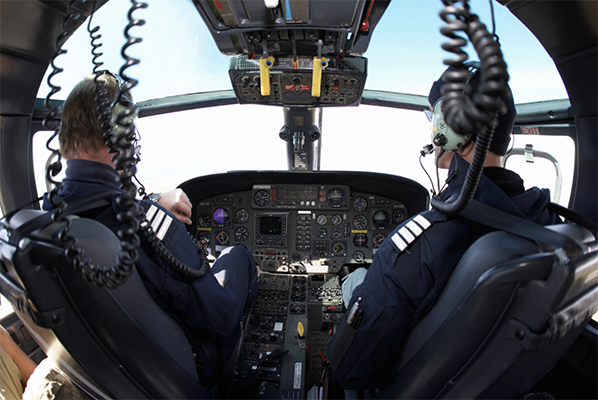
The specification declares the performance and recording requirements (e.g. total recording capacity, recording delay tolerances, etc) for both the ambient and pilot sources, while adding requirements or provisions for other capabilities (e.g. requiring a build erase function to be present). The standard also provides for the test requirements and procedures necessary to demonstrate a CARS’ performance against the standard’s requirements.
2. Aircraft Data Recording System (ADRS)
ADRS is a system that records digital flight data in an uncompressed format. The ED-155 standard allows for a variety of aircraft data sources, which is an effort to accommodate the wide variety of aircraft on which such recorders were intended to be installed. For example, acquiring flight data on helicopters that are not equipped with digital data buses as a portion of the avionic equipage may not be impractical – as a result the standard allows for sensors interior to the ADRS to record such data (e.g. pitch/roll data from an IMU, GPS data, etc). Alternatively, a smaller aircraft used for business transport purposes may provide practical access to a digital data bus (e.g. ARINC 429) and the standard provides performance requirements for recording from such sources.
Much like the CARS, the ADRS specification declares performance and recording requirements for the ADRS while also specifying which parameters must be recorded, and at what frequency, for a unit to qualify as an ADRS.
3. Aircraft Image Recording System (AIRS)
AIRS equipment is deployed for the intent of capturing image data regarding aircraft operation, which is typically then synchronized in time with the recording of other recorder types. For example, synchronizing AIRS with a CARS will provide a synchronized playback of image and audio data from a flight. Likewise, synchronizing AIRS and ADRS can provide data to create synchronized cockpit video with flight animations.
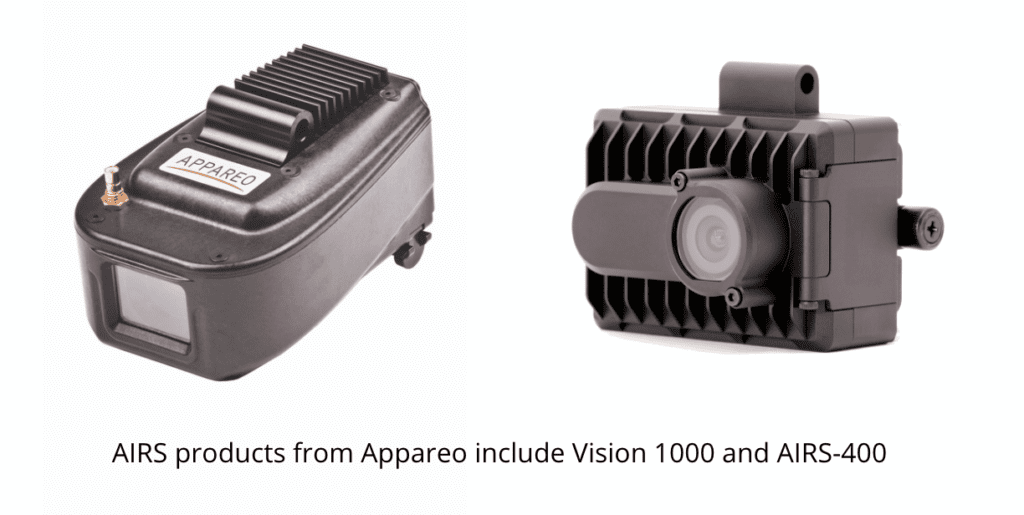
AIRS systems are separated into six different classes. The classes are described by alpha characters (A through F) and are organized as following:
Class A provides a general image of the cockpit including instruments and a view of external environment (through the glareshield).
Class B provides a recording of the data-link message display.
Class C provides for a means of recording flight data where it is not possible or prohibitively expensive to otherwise do so.
Class D provides a means for capturing heads up displays.
Class E provides a means of capturing other camera images present to pilots (e.g. as a means of capturing cargo or cabin views presented to pilots).
Class F provides means for capturing an external view of the aircraft.
The standard provides guidance for operational considerations, like what portions of the cockpit to capture in the image frame and provisions for data security/privacy (e.g. preventing AIRS data from being easily played back by non-investigative personnel, as well as performance requirements in the areas of recording capacity, recording delay, and image compression.
4. Data Link Recording Systems (DLRS)
Often when people refer to flight data recorders the physical interface between the flight data recorder and the aircraft is often done through ARINC 717. The objective of a DLRS is to record the messages passing to and from the aircraft via digital means, which is typically accomplished using a standard avionic digital interface like ARINC 429. In this manner, the DLRS is attempting to acquire information like data exchanged through CPDLC, digital ATIS, NOTAM delivery, etc.
If you’re still trying to understand ED-155, your requirements, and how to show compliance, please contact Appareo at sales@appareo.com.
To learn how Appareo’s AIRS-400 can comply with ED-155, click here.
 David Batcheller
David Batcheller
President & CBO
https://appareobeta.flywheelsites.com/2021/08/09/what-is-ed-155/
Mythbusting – Safety Management Systems Help Even the Safest Operators
MYTH: If you have a solid safety management system, you don’t need to monitor flight data.
FACT: Even the best operators can benefit from a flight data monitoring program.
There is a common misconception that safety management systems and tools like flight data monitoring are there to help the operators with the poorest track records to improve. While these tools can be a tremendous help to such operators, introduction of flight data monitoring systems to operators with great safety records can still make a lasting impact.
For one example, look no further than the Bristow Group’s performance from 2007 to 2015.
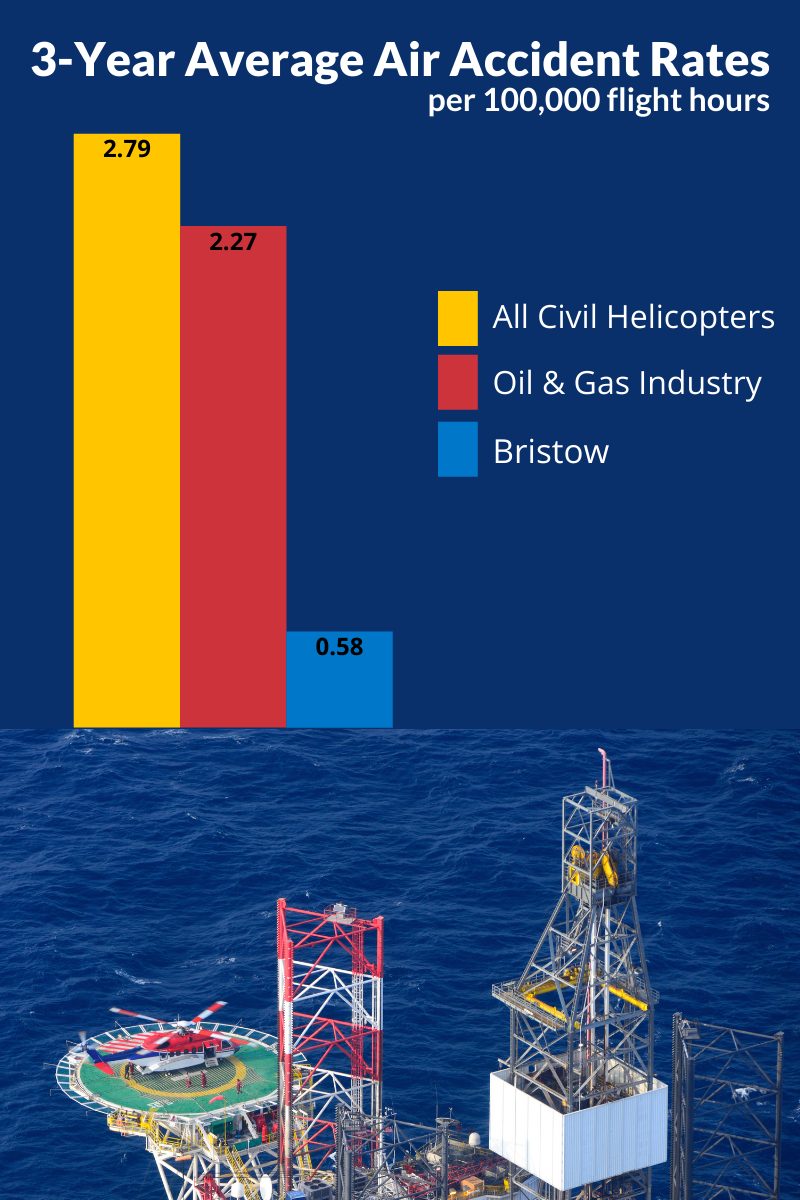
By any measure, compared against the industry and peers, the Bristow Group had a fantastic safety track record. But even though Bristow was starting from a position where their accident rate was half of their industry, through safety management systems and flight data monitoring Bristow was able to cut their average accident rate by a factor of 10 over a six-year period.
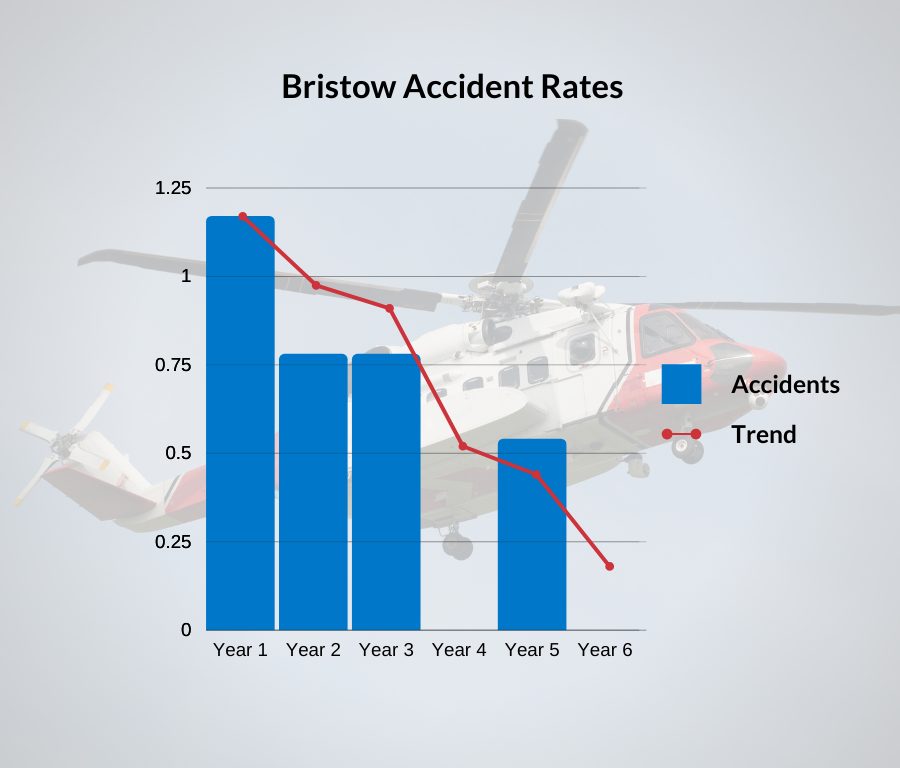
No matter how consistently safe, or how much an operation has been struggling, flight data monitoring can be an incredible tool for driving lasting gains in safety and operational efficiency.
Contact us today for a conversation about how flight data monitoring tools can bring value to your operations.
 Kris Garberg – President, Appareo Aviation
Kris Garberg – President, Appareo Aviation
https://www.appareo.com/2020/11/17/mythbusting-safety-management-systems-help-even-the-safest-operators/
Appareo Releases Major Upgrade to Web-Based Flight Data Analysis Software
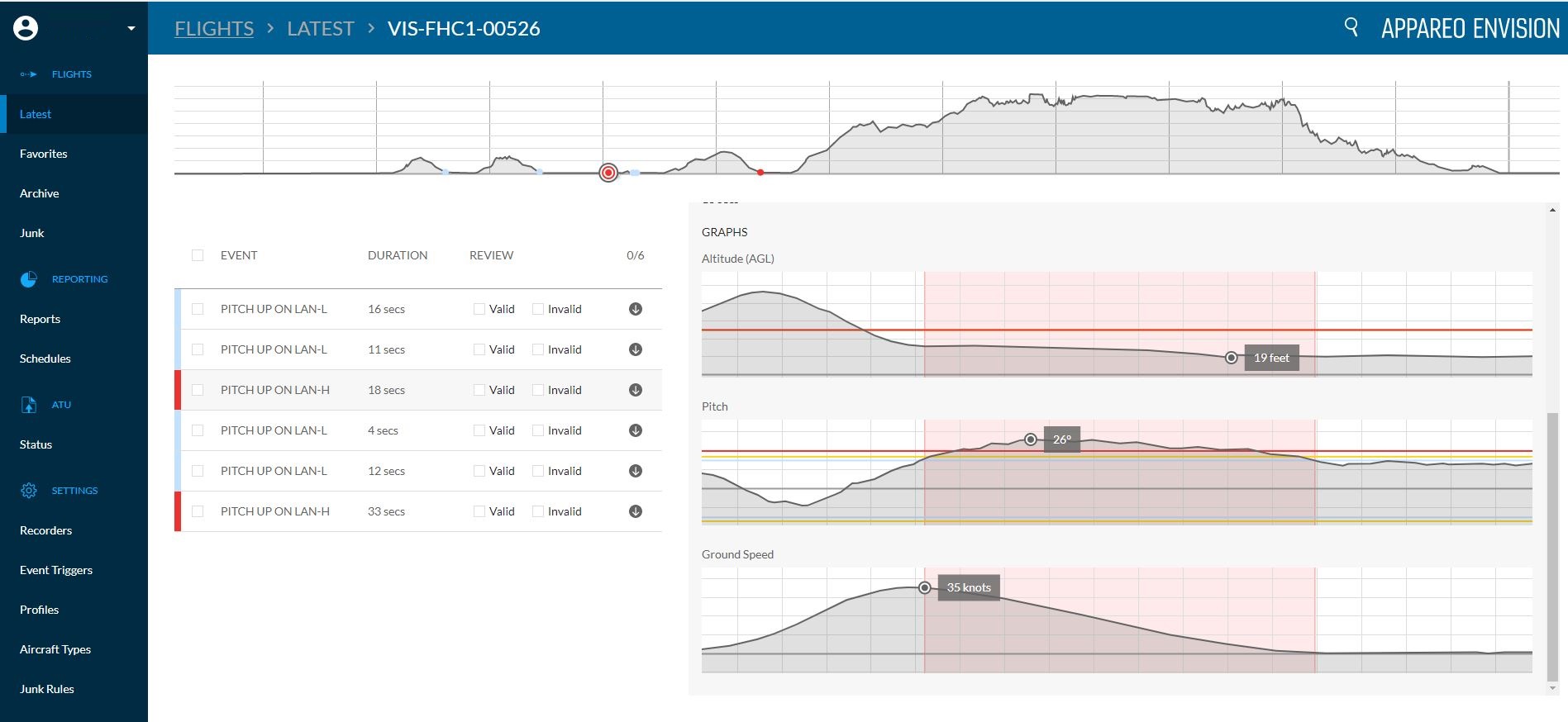
FARGO, North Dakota (May 18, 2020) — Appareo today released a major architectural upgrade to Appareo EnVision, the company’s analysis software system for Flight Data Monitoring (FDM) or Flight Operations Quality Assurance (FOQA) programs. Appareo EnVision is a web-based application that allows fleet operators to access past and current flight data, generate detailed reports, and trend the safety improvements in their operations. Prior to this release, the software accepted flight data captured by Appareo’s Vision 1000 cockpit recorder. With this architectural rewrite, the Appareo EnVision web app can now accept flight data from other devices, including other Appareo flight data recorders and even third-party sources.
“While many flight analysis applications require significant technical capability to operate with effectiveness, EnVision was built with a focus on ease of use” said David Batcheller, President & CEO of Appareo. The software provides deep access to raw data while delivering it in a simple, clean interface to automatically filter flight data and identify flights that require further review.
The Importance of Flight Analysis
FDM and FOQA programs have proven effective in improving safety and decreasing the occurrence of incidents or accidents when the program follows three simple practices: 1) identify deviations, 2) implement corrective actions, and 3) measure results.
Identifying deviations from standard operating procedures (SOP) is not an indication of irresponsible or deliberately malicious behavior by pilots. Deviations often occur because humans are susceptible to the “normalization of deviance.” This phrase describes a process in which deviance becomes normalized if it doesn’t result in an instantaneous negative consequence. While some operating procedures may seem inconvenient or unimportant, the right mix of variables could result in a deviance turning deadly. That is the reason behind the expression, “aviation regulations are written in blood.”
Appareo CEO David Batcheller shares his own personal experience with normalization of deviance: “I moved into a new neighborhood which had a stop sign near my house. For months I didn’t see another car when I came to the stop sign every day. After a while, I started to roll through the stop, then coast through the stop, and eventually I forgot the stop sign was there entirely. Flash forward to harvest season when I discovered that the intersection became very busy, and I was nearly broadsided by a truck as I ignored the stop sign. Fortunately that was a near miss, but that incident could have been fatal. It’s the kind of thing that routinely happens in all walks of life, flight operations included. Flight Data Monitoring and Flight Operations Quality Assurance programs should be thought of as the kindly local sheriff in the rearview mirror who is ready to provide a reminder that rules are important when our more fallible human inclinations take over.”
How It Works
Data is transferred from an aircraft to a local computer via SD card, then uploaded to Appareo servers for analysis. That transmission can happen instantaneously or it can be scheduled for a different time of day, based on the user’s preferences. “The scheduling feature was developed for our customers who have operations in remote locations with limited internet bandwidth,” said Batcheller. “They appreciate the ability to schedule their data file transmission to take place during periods of low network activity.”
Once data is received, the EnVision software parses all flight data against customized event triggers that were defined by the user based on their organization’s flight operating procedures. The process of configuring those event triggers is one of EnVision’s most powerful features; using a simple interface and drop-down menu, users can define the events that are important to monitor, and specify the parameters that indicate when a flight has deviated from flight ops.
Detailed reports are easily generated from those events, delivering the information that operators want to monitor and the ability to trend that information over time. Comprehensive data for every flight is archived on the Appareo servers, giving customers convenient online access to their data whenever it’s needed.
Appareo EnVision is offered as a per-aircraft subscription service with no user limits, and includes the hosting of stored flight data. To learn more about Appareo’s turnkey flight data monitoring solutions, visit Appareo.com/FDM-FOQA.
# # #
About Appareo
Appareo is a recognized leader in the custom design, development and manufacture of innovative electronic and software solutions for aerospace. Through the creative application of cutting-edge technologies, Appareo creates complex end-to-end solutions that include both mobile and cloud-based components. The company is privately held, with headquarters in Fargo, N.D., and design offices in Tempe, Ariz. and Paris, France. All products are built and supported in the USA.
About FDM and FOQA
FDM and FOQA programs are one of the NTSB’s Top 10 Most Wanted and an area of strong recommendation from the NTSB to the FAA for new rulemaking to improve the safety of Part 135 operations.
Media Assets
www.appareo.com/media
https://www.appareo.com/2020/05/18/appareo-releases-major-upgrade-to-web-based-flight-data-analysis-software/
NTSB recommends that Part 91, 121, and 135 aircraft should be equipped with FDM

The FAA released a Fact Sheet that lists several NTSB recommendations, followed with the FAA’s considerations and actions being taken. Flight Data Monitoring (FDM) is one of the recommendations for how to improve the safety of Part 135 aircraft flight operations.
“The crash-resistant flight recorder system should record cockpit audio and images with a view of the cockpit environment to include as much of the outside view as possible,” the NTSB recommended on the fact sheet. However, the document stated that the FAA is not considering rulemaking at this time for these recommendations, saying, “The FAA will examine possible ways of polling operators through their aviation safety inspectors to identify voluntary flight data monitoring (FDM) system equipage rates.”
Read the full FLYING article: FAA Responds to NTSB’s “Most Wanted” Safety Recommendations.
View the NTSB Most Wanted List for 2019-2020 here.
View the FAA Fact Sheet here.
FDM SOLUTIONS FROM APPAREO
Appareo provides a turnkey flight data monitoring system that includes the Vision 1000, a low-cost flight data recording solution that can be utilized on any aircraft. Click here to learn more about our flight data monitoring and flight operations quality assurance solutions.
https://www.appareo.com/2020/05/11/ntsb-recommends-that-part-91-121-and-135-aircraft-should-be-equipped-with-fdm/
Appareo Releases Crash-Hardened Recoverable Data Module with Auto Bus Detection
Weighing less than two pounds, this rugged and compact enclosure withstands DO-160G category tests to ensure the survival of critical flight data.
FARGO, North Dakota (April 29, 2020) — Appareo today announced a new addition to the company’s line of crash-survivable, remote-mountable, flight data recording modules for rotorcraft and fixed-wing aircraft. The Recoverable Data Module, model 300 (RDM-300) is a small, lightweight, flexible, and affordable crash-hardened flight data recorder that was originally developed as a custom solution for a customer, and has now been equipped with an auto-detect feature for ARINC or serial buses, making it easily installed in any type of aircraft.
While there are regulatory requirements for commercial aircraft to be equipped with flight data recorders, there are no equivalent requirements for many smaller aircraft. Even so, aircraft manufacturers and large fleet operators have realized the benefits of recovering flight data for the benefits of helping investigators determine if an incident or accident was caused by an airplane system problem, an external event, or pilot error. Historically, this flight data has contributed to airplane system design improvements.
One airframe manufacturer who decided to invest in the benefits of recoverable flight data collaborated with Appareo to design a small and lightweight device that could meet high survivability standards.
“This module is ideal for aircraft that are not required to carry ED-112 compliant, large, heavy data recorders, but rather, for applications where reliable survivability of flight data provides great business and investigative value,” said David Batcheller, President & CEO of Appareo.
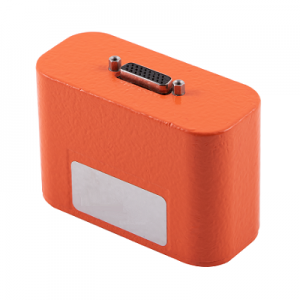 The RDM-300 is easy to incorporate into any aircraft, automatically accommodating the aircraft’s bus speed, and easily configurable to recording preferences. Once installed, the unit can record more than 500 parameters per second to the non-complicated, solid-state memory within the device. Weighing less than two pounds, the RDM-300 perfectly balances rigorous survivability needs while optimizing the size and weight of the product.
The RDM-300 is easy to incorporate into any aircraft, automatically accommodating the aircraft’s bus speed, and easily configurable to recording preferences. Once installed, the unit can record more than 500 parameters per second to the non-complicated, solid-state memory within the device. Weighing less than two pounds, the RDM-300 perfectly balances rigorous survivability needs while optimizing the size and weight of the product.
Although typically used to collect parametric data from ARINC 429 buses or other serial interfaces, the RDM-300 can also be configured to collect cockpit voice recorder (CVR) or cockpit image data.
For full technical specifications, refer to the RDM-300 Data Sheet.
# # #
https://www.appareo.com/2020/04/29/appareo-releases-crash-hardened-recoverable-data-module-with-auto-bus-detection/
Appareo Brings AI and FDM Expertise to Panel Discussions at EBACE
Appareo’s Director of AI Systems Josh Gelinske and Vice President of Solutions Brad Thurow are scheduled to participate in two panel discussions during the European Business Aviation Convention & Exhibition (EBACE) in Geneva on May 22, 2019.
View the full agenda here: EBACE Program Schedule

‘Lexi, book me a jet’: Artificial Intelligence and Business Aviation
Moderator: Eric Leopold, International Air Transport Association (IATA)
Panelists:
Josh Gelinske, Appareo
Peter Conrardv, GE Aviation
Bernhard Fragner, CEO & Founder, GlobeAir
Shiv Trisal, Aftermarket Digital Strategy Lead, Collins Aerospace
Description from EBACE website:
While companies like Facebook, Apple and Amazon rollout revolutionary changes to how we interact with machine-learning technology, many are still uncertain on exactly how artificial intelligence (AI) is being used by aerospace businesses. As an industry, business aviation is constantly striving to improve both the way it works and its customer satisfaction. To that end, it embraces technological advancements by constantly adapting to society’s needs. But AI can potentially go far beyond its current uses. Quite simply, AI can redefine how our industry goes about its work. In this session we will share insights by industry representatives on the improvements AI contributes to the aviation sector. We invite you to join us for this exciting panel discussion.

FDM – What Do You Need?
Moderator: Johan Glantz, EBAA
Panelists:
Dave Jesse, FDS
Kevin Martin, Aerobytes
Brad Thurow, Appareo
Description from EBACE website:
Whether you were already considering a Flight Data Monitoring (FDM) solution or plan on an acquiring an aircraft already fitted with one, this session aims at discussing the financial and operational impact, as well as the implications it has on your aircraft’s cockpit and on-ground hardware.
EBACE | May 21-23, 2019 | Geneva, Switzerland
EBACE is a premier event and the annual meeting place for the European business aviation community. The exhibition is jointly hosted each year by the European Business Aviation Association (EBAA), the leading association for business aviation in Europe, and the National Business Aviation Association (NBAA), the leading voice for the business aviation industry in the United States. Although EBACE is the only major European event focused solely on business aviation, attendees come from as far as Africa, Asia, the Middle East and North and South America.
https://www.appareo.com/2019/04/26/appareo-brings-ai-and-fdm-expertise-to-panel-discussions-at-ebace/
NTSB 2019–2020 Most Wanted List Calls for Flight Data Monitoring
The National Transportation Safety Board’s (NTSB) Most Wanted List of Transportation Safety Improvements outlines the critical changes that are needed to reduce transportation accidents, injuries, and fatalities. Flight Data Monitoring (FDM) is one of the recommendations for how to improve the safety of Part 135 aircraft flight operations:
Part 135 operators must implement safety management systems that include a flight data monitoring program, and they should mandate controlled flight-into-terrain-avoidance training that addresses current terrain-avoidance warning system technologies.
What is the problem and what can be done?
According to the NTSB website…
The Problem: Most of the organizations that conduct Part 135 operations do not have—and are not required to have—a safety management system (SMS), flight data monitoring (FDM), or controlled flight into terrain (CFIT)-avoidance training program. These programs enable operators to take a strategic approach to safety management, requiring that safety-focused policies, practices, and procedures be implemented to keep aircrews and passengers safe. SMS and FDM programs also yield data that can be used to improve safety practices to better prevent accidents.
What can be done: We know that SMS, FDM, and CFIT programs can improve safety and prevent crashes. We currently have 21 open safety recommendations addressing the safety gap in Part 135 operations. Operators must be proactive about safety; they should not wait for regulations or an accident to move them to action. Some operators have already incorporated SMS, FDM, and CFIT programs and are seeing tremendous safety returns.
Read more about the NTSB’s initiative to Improve the Safety of Part 135 Aircraft Flight Operations.
FDM Solutions from Appareo
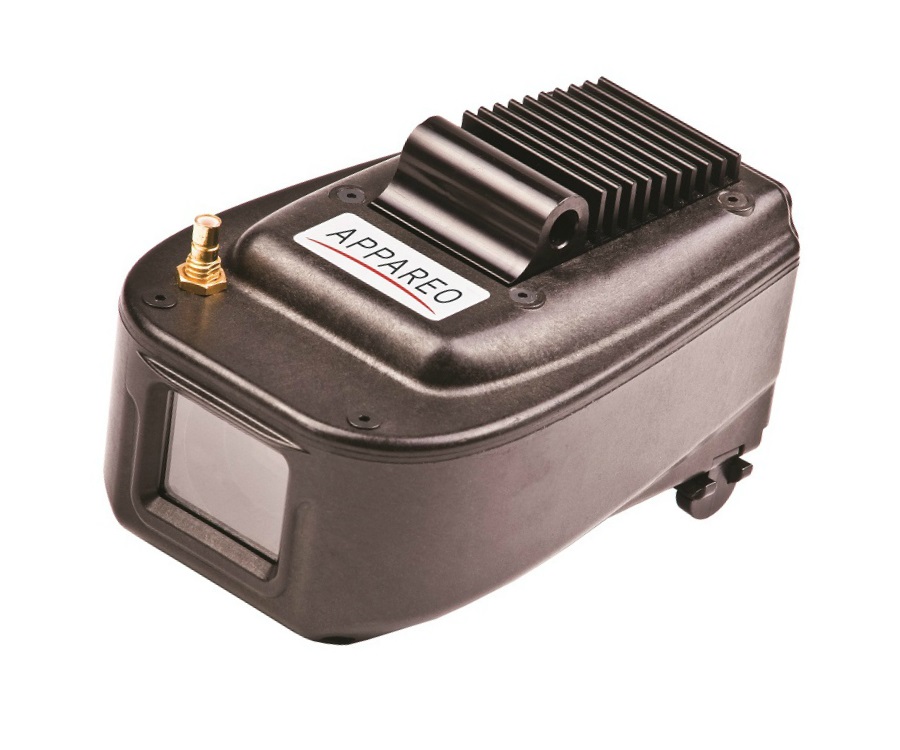
Appareo provides a turnkey flight data monitoring system, including the Vision 1000, a low-cost flight data recording solution that can be utilized on any aircraft.
https://www.appareo.com/2019/02/20/ntsb-2019-2020-most-wanted-list-calls-for-flight-data-monitoring/

